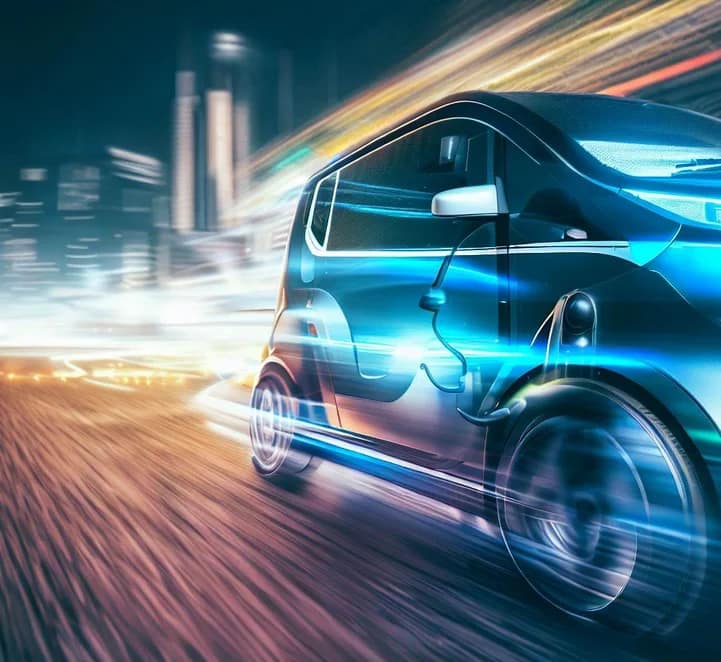Electric vehicles (EVs) are rapidly transforming the automotive industry as a more sustainable transportation option compared to gas-powered vehicles. As EV technology continues advancing, components like mirror systems are also evolving to meet the unique needs of electric cars. In this article, we’ll explore the key features, benefits, and maintenance tips for modern electric vehicle mirror systems.
The mirror systems in EVs utilize electric motors and gears to enable automatic positioning adjustments. This differs from traditional manual mirrors that must be moved manually by the driver.
Inside the mirror housing are two mirror engines that function similar to basic electric motors. They convert electrical energy into rotational movement to shift the mirror position. The engines connect to gears that transfer this motion to tilt the mirror up, down, left, or right.
To control the electric motors, there is a switch panel inside the EV. Pressing the appropriate buttons on the panel sends signals through electrical wiring to activate the desired mirror motions. This allows the driver to conveniently optimize the mirror viewing angle without physically touching the mirrors.

Several important components work in unison to facilitate the automated functionality of electric mirrors in EVs.
This is the external casing that surrounds and protects the mirror. It has a sleek convex shape to accommodate the mirror engines behind the glass.
These small electric motors receive signals from the switches and convert electrical energy into mechanical energy to move the gears connected to the mirror.
The rotational force from the mirror engines is transmitted through a series of small gears in order to tilt the mirror in different directions.
This is the reflective glass surface that the driver views. Advanced electric mirrors may have auto-dimming coatings to reduce nighttime glare.
Electrical wires deliver power to the motors and transmit control signals when the driver presses the mirror adjustment switches.
Buttons or switches inside the EV allow the driver to activate mirror movements by sending electric signals through wires to the motors.
There are several important advantages that electric mirrors offer compared to traditional manual mirrors.
With just the press of a button, electric mirrors can be positioned to the desired angle without the driver manually pushing or bending the housing. This convenience helps optimize rear visibility quickly and easily.
Many electric mirrors can fold in completely when the vehicle is turned off or parked. This automatic retraction helps avoid accidental damage from hitting walls, other cars, pedestrians, etc.
High-tech electric mirrors have built-in light sensors that detect bright incoming lights and automatically dim a portion of the mirror to reduce glare. This auto-dimming maximizes nighttime visibility and safety.
The aerodynamic convex shaping of electric mirror housings gives EVs a modern, cutting-edge appearance.
Heating elements can be incorporated to clear frost, snow, and ice from electric mirrors, improving winter visibility.
Advanced systems can store preferred mirror positions in memory and recall them automatically at the press of a button.
Many newer EV models showcase innovative electric mirror designs:
While electric mirrors provide greater convenience, they also require proper maintenance to keep them functioning smoothly long-term. Here are some important electric mirror care tips:
As EV adoption accelerates globally, engineers continue innovating smarter electric mirror designs to enhance driving experiences. Some emerging technologies on the horizon include:
Rather than glass, these systems use cameras and digital screens to provide expanded views around the vehicle. This removes blindspots and the need for head turning.
Future mirrors may replace physical buttons with touchpads on the housing allowing adjustment by swiping a finger. Voice commands could also be incorporated.
When approaching or locking the vehicle, electric mirrors may automatically fold or extend without any input from the driver.
Light sensors and algorithms may enable mirrors to automatically adjust between multiple levels of dimming based on ambient lighting conditions for optimized visibility.
Electric mirrors may network with mirrors on nearby vehicles to coordinate dimming in response to each other’s headlights, improving visibility for both cars.
AI and predictive technology may allow mirrors to anticipate icing conditions and proactively heat mirrors before frost builds up.
Gradual dimming could create smoother transitions when lights from other cars are detected, reducing glare distraction.
As electric vehicles continue rising in popularity, the performance and capabilities of mirror systems are accelerating as well. Automated electric side-view mirrors provide significant visibility, convenience, and aesthetic benefits compared to traditional manual mirrors. Advancements in auto-dimming, heating, and folding make electric mirrors well-suited for EV driving needs. Proper maintenance helps ensure lasting operation. With ongoing innovation, electric vehicle mirrors will only get smarter, further optimizing and customizing the driver’s experience.